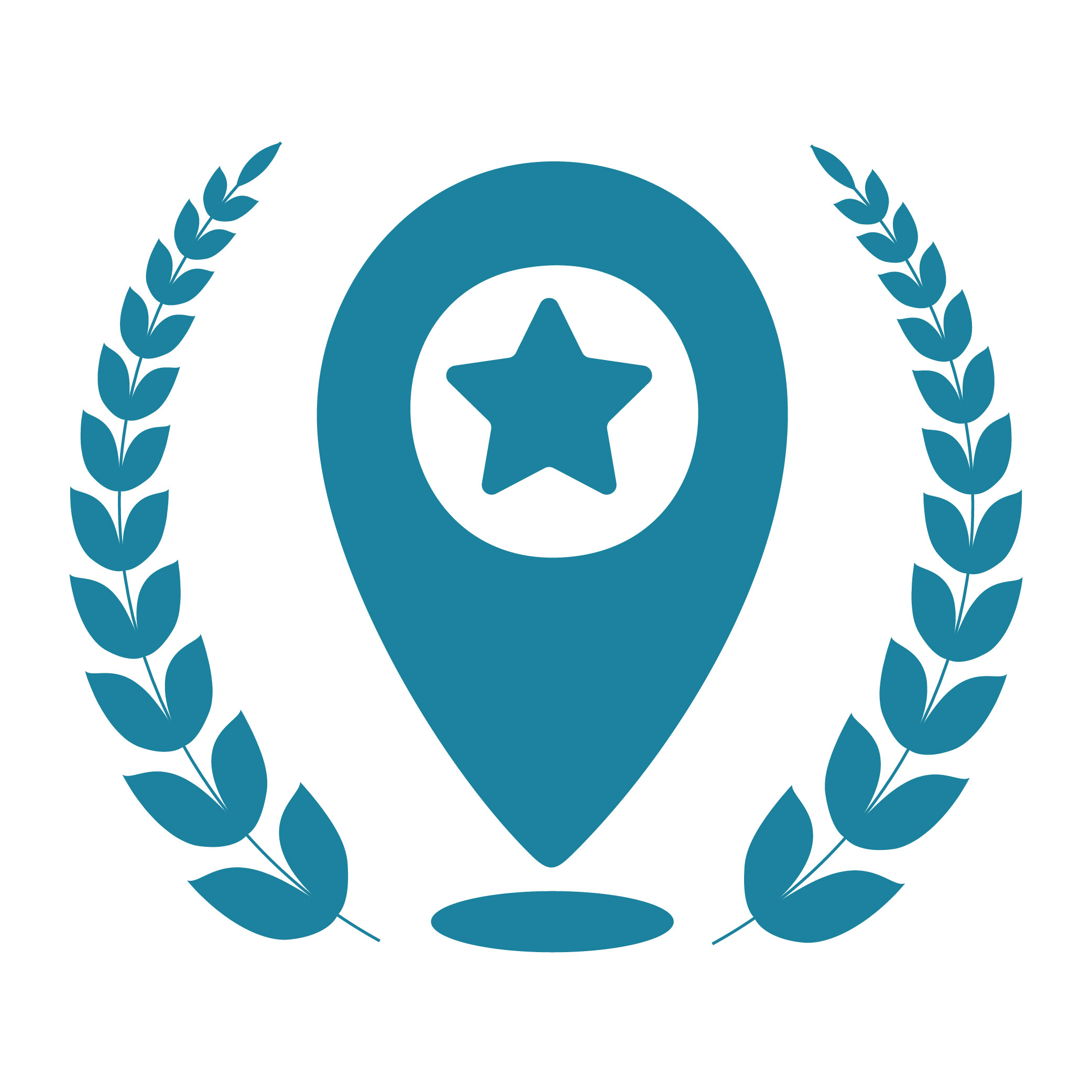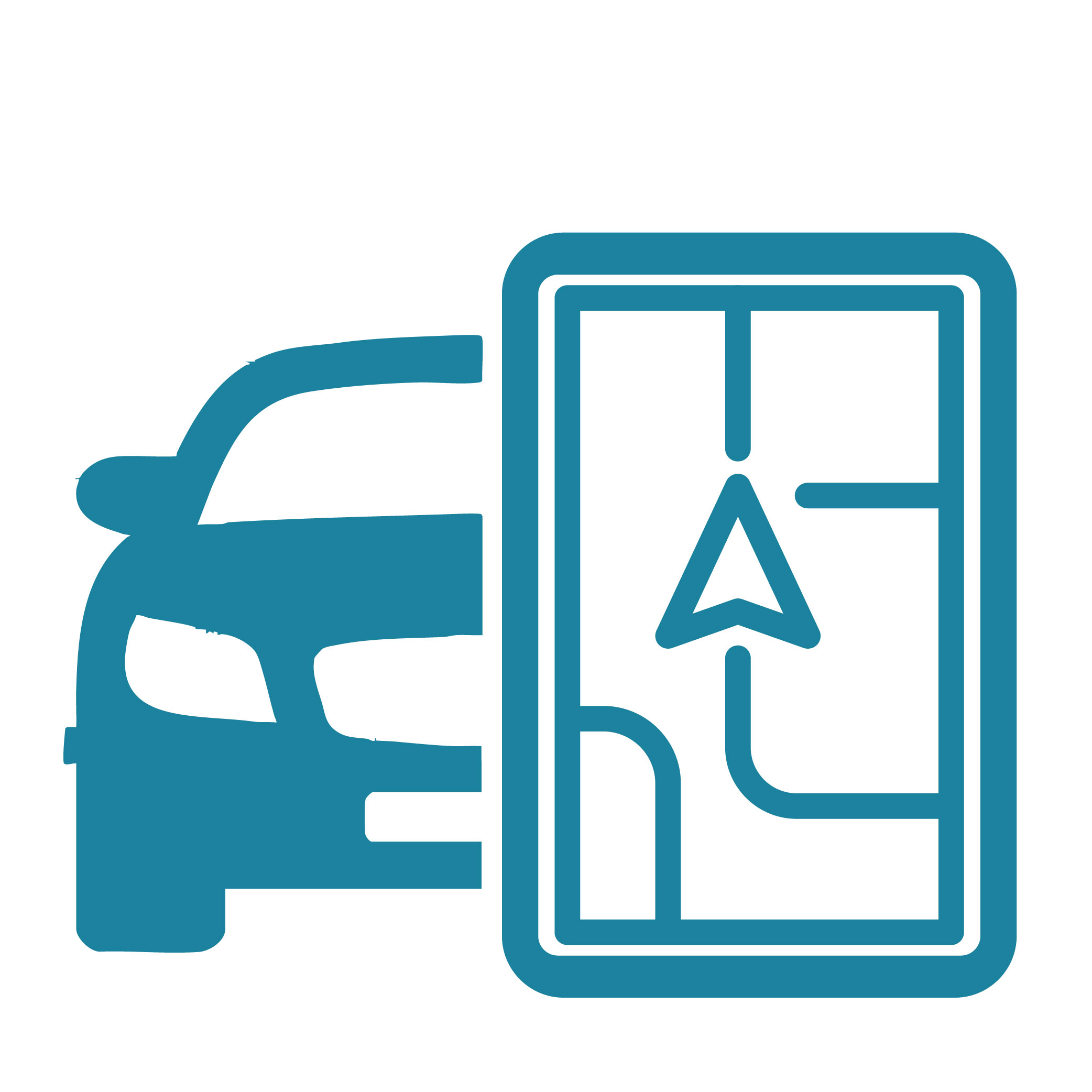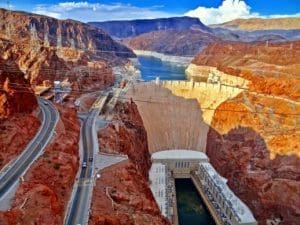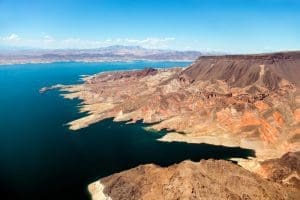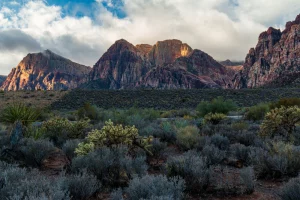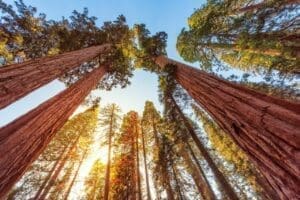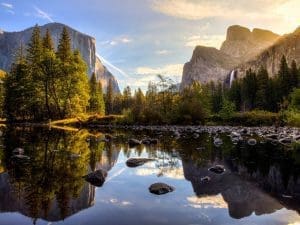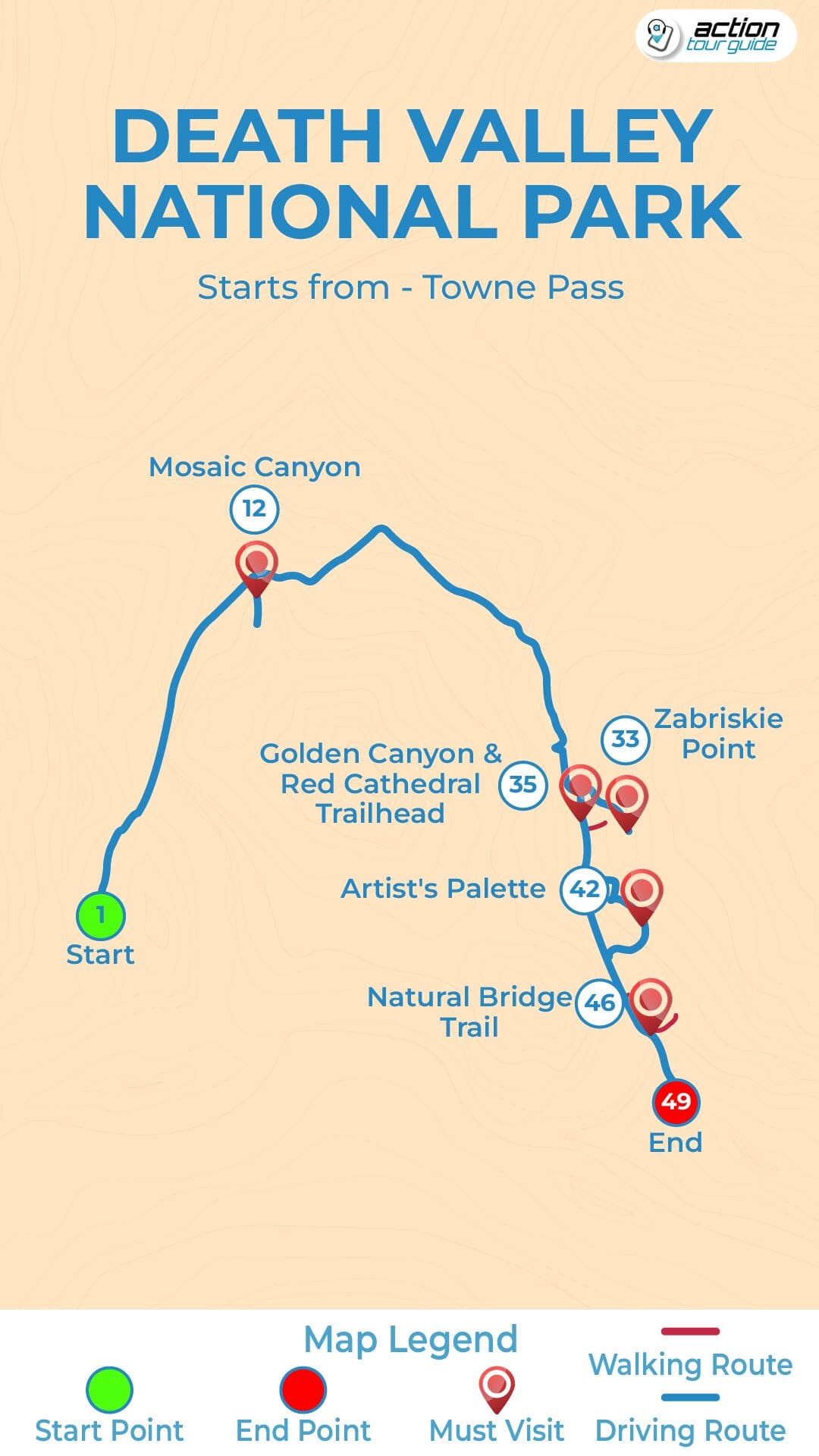“It’s so hot the rocks might be sweating.”
Death Valley is a place of extremes: the hottest, driest, and lowest point in North America. But behind the name lies a surreal and stunning world, where salt flats shimmer like glass, mountains glow with mineral colors, and the silence feels otherworldly.
This isn’t just a desert. It’s a land shaped by time and sun, where canyons twist like spilled paint and gold miners once gambled their lives on hidden fortunes. Step into a place where life feels improbable and the views feel impossible.
With this self-guided audio tour, you’ll explore the valley at your own pace, with stories that play automatically as you drive. Learn how this landscape formed, how people survived it, and what makes each stop more spectacular than the last.
You’ll cruise past the golden glow of Zabriskie Point. Wander the wild textures of Twenty Mule Team Canyon. Stand high above the desert at Dante’s View, then dip into the lowest of lows at Badwater Basin. Artist’s Palette splashes the land with bright purples, reds, and greens. Devil’s Golf Course crackles underfoot like scorched popcorn. And Furnace Creek? Let’s just say the name fits.
Along the way, you’ll hear about mirages, mine towns, and the park’s record-shattering temperatures, plus how to stay safe while soaking it all in.
Disclaimer: The only thing that melts here is your sense of reality. And maybe your ice cream.
Download the Death Valley Trip Planner for more details on how to reach the park, must-see stops, best places to stay, when to visit, activities to do, packing tips, and more!
Hello and Bonjour – Explore Death Valley in English and French!
Our Death Valley tour is available in both English and French, offering a comprehensive and immersive experience for all.
Want all of our tours? Upgrade to Action+:
- An annual $99.99/year subscription offers access to over 200+ tours.
- Unlimited use throughout the year.
- Includes free access to new tours as they are released.
Know Before You Go
NOTE:
- South Badwater Road: No vehicle access to any points of interest south of Badwater Basin. Foot and bicycle traffic permitted. Access is restricted due to debris and damage from flooding.
- Artist Drive: No foot or bicycle traffic. Access is restricted due to debris and damage caused by flooding.
- Bonnie Clare Road & Scotty’s Castle: No access permitted, including pedestrians, due to flood recovery work. Reopening not sooner than 2027 (dependent on project completion).
Nearby Tours
Death Valley Driving Tour Map
Where To Start?
Tour Start Addresses:
(The tour begins on Route 190 at Death Valley Junction, near the intersection with Route 127. From here, head west on Route 190 towards Furnace Creek to start your journey into Death Valley.)
(The tour begins from the parking lot of Furnace Creek Visitor Center. Please note, this is a suggested starting point. We are not affiliated with the visitor center or any businesses in the area, so their staff will not have information about this tour.)
(The tour begins on NV-374, near the Death Valley National Park sign, about 8 miles west of Beatty. As you approach, you’ll see the welcome sign on your right. From there, head west toward Daylight Pass and Furnace Creek.)
(The tour begins on CA-190 at Towne Pass, about 11 miles east of Panamint Springs. From here, continue east toward Stovepipe Wells and Furnace Creek to start your journey into Death Valley.)
How Does It Work?
- Once you book a tour, you’ll get a text/email with instructions.
- Download the app (while in good wifi/signal) and use your unique password to access your tours. If multiple versions or entry points are available for your tour, be sure to download all the audio guides.
- Audio Setup: Connect your phone to the car stereo via Bluetooth, USB, or Aux, and bring headphones on walking tours. CarPlay and Android Auto are currently not supported; we’re working toward a solution with Apple.
- To begin touring, go to the starting point and launch the app.
- The audio starts automatically once you reach the starting point. Stick to the tour route and speed limit for the best experience.
- Please note that no one will meet you at the starting point.
Audio Story Highlights
-
Welcome
-
Timbisha Shoshone
-
Gold!
-
The Death Valley 49ers
-
Lost in Death Valley
-
Stranded 49ers
-
Why Is It So Dry?
-
Why Is It So Hot?
-
Safety Reminders
-
Borax
-
Native American Music
-
Dante's View
-
Superblooms
-
Pete Aguereberry
-
Twenty Mule Teams
-
Twenty Mule Team Canyon
-
White Gold
-
Zabriskie Point
-
Christian Brevoort Zabriskie
-
A Thirsty Oasis
-
Furnace Creek Visitor Center
-
Collision and Separation
-
Golden Canyon and Red Cathedral Trail
-
Booms and Busts
-
Ghost Towns
-
Mars Hill
-
A "Zabriskie" Gamble
-
Artist's Drive
-
Artist's Palette
-
Building Death Valley
-
Devil's Golf Course
-
Natural Bridge Trail
-
A Legacy to Be Proud Of
-
Death Valley Today
-
Badwater Basin
Preview The Tour
Tour FAQs
While there’s no official record corroborating it, the most popular explanation is that the name came from the 49er pioneers who had just crossed the valley at great cost. Supposedly, as they finally left the valley behind, one man turned and said “Goodbye, Death Valley,” thus giving the area its name.
Death Valley really is the hottest place on earth, at least as far as surface temperatures go. It’s also the driest place in North America. Despite this, the Timbisha Shoshone people actually lived here hundreds of years ago!
Death Valley is perfectly safe to visit during the summer as long as you take proper precautions! Always bring more water than you think you need, make sure your car’s A/C is functioning properly, and don’t embark on any long hikes. If you keep all this in mind, you’ve got nothing to worry about!
While pets are allowed in all developed areas of the park, like roads and overlooks, they are not allowed on trails. That includes popular trails like the Salt Flats!
The standard $30 per vehicle pass gets you into Death Valley for 7 days, but if you plan to visit other national parks this year, you should definitely opt for the $80 American the Beautiful pass. It’s good for 12 months and gets you into any national park in the country!
What you’ve heard is true: Death Valley really IS the hottest place on Earth! In 1913, the Furnace Creek thermometer measured an air temperature of a sweltering 134 degrees fahrenheit, the highest ever recorded.
If you want to expand your trip beyond Death Valley itself, you can always visit Las Vegas! It’s only a couple hours away and offers plenty of lively activities to break up your national park exploration.
Despite its harsh climate, there are actually animals in Death Valley! Everything from jackrabbits to desert bighorn sheep and even mountain lions can be found in the valley!
Contrary to what you might expect, life is actually quite plentiful in Death Valley, including all manner of mammals, reptiles, and insects. There’s also a thriving micro ecosystem known as the “cryptobiotic crust,” which means “hidden life”!
As you might expect, the weather in Death Valley is HOT, especially during the summer. During the cooler months, however, the valley becomes quite temperate, and can even get chilly at night! Rain is rare, so you probably won’t need to pack an umbrella!
While it’s possible to visit Death Valley in one day, it’s recommended to spend more time to fully explore and appreciate the park’s diverse landscapes and attractions. To see everything the park has to offer, plan for at least 2-3 days.
Cell phone coverage in Death Valley can be limited due to its remote location. While some areas may have reception, there are also areas with no signal. It’s a good idea to check with your service provider and plan accordingly.
The coldest month in Death Valley is typically December. While the park is known for its extreme heat, temperatures can drop significantly during the winter months, especially at night. Read more here.
Explore 200+ Tours
Inclusions and Exclusions
 App on your phone: A link to download the Action Tour Guide App and Password for your tours.
App on your phone: A link to download the Action Tour Guide App and Password for your tours.
 Easy to use: Stories play automatically via GPS, hands‑free. Assistance available all day via call, chat, or email.
Easy to use: Stories play automatically via GPS, hands‑free. Assistance available all day via call, chat, or email.
 Flexible schedule: Use any day, any time. Valid for multiple visits up to 1 year after purchase.
Flexible schedule: Use any day, any time. Valid for multiple visits up to 1 year after purchase.
 Interactive audio stories: Experience local history and culture through clear, concise narratives from experienced narrators.
Interactive audio stories: Experience local history and culture through clear, concise narratives from experienced narrators.
 At your own pace: No group. Take breaks for photos, snacks, hikes. Go at your own pace.
At your own pace: No group. Take breaks for photos, snacks, hikes. Go at your own pace.
 Offline use: No cell signal or wifi required. Offline GPS Map & route. Stop-to-stop direction.
Offline use: No cell signal or wifi required. Offline GPS Map & route. Stop-to-stop direction.
 Don’t miss a thing: Enjoy a full itinerary, travel tips, narrated videos, text guides, and hidden gems.
Don’t miss a thing: Enjoy a full itinerary, travel tips, narrated videos, text guides, and hidden gems.
 Transportation, parking fees, food, and drinks.
Transportation, parking fees, food, and drinks.
 Entry tickets or reservations for any attractions along the route.
Entry tickets or reservations for any attractions along the route.
 Car Rental: Please arrange a rental car at the closest airport or train station.
Car Rental: Please arrange a rental car at the closest airport or train station.






















